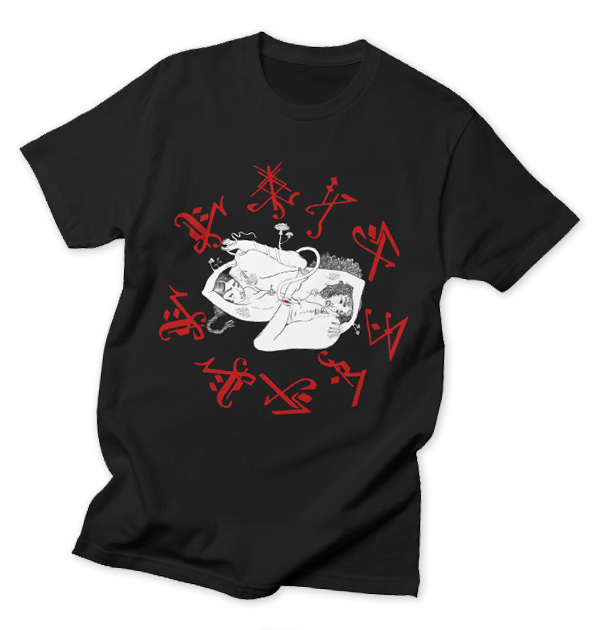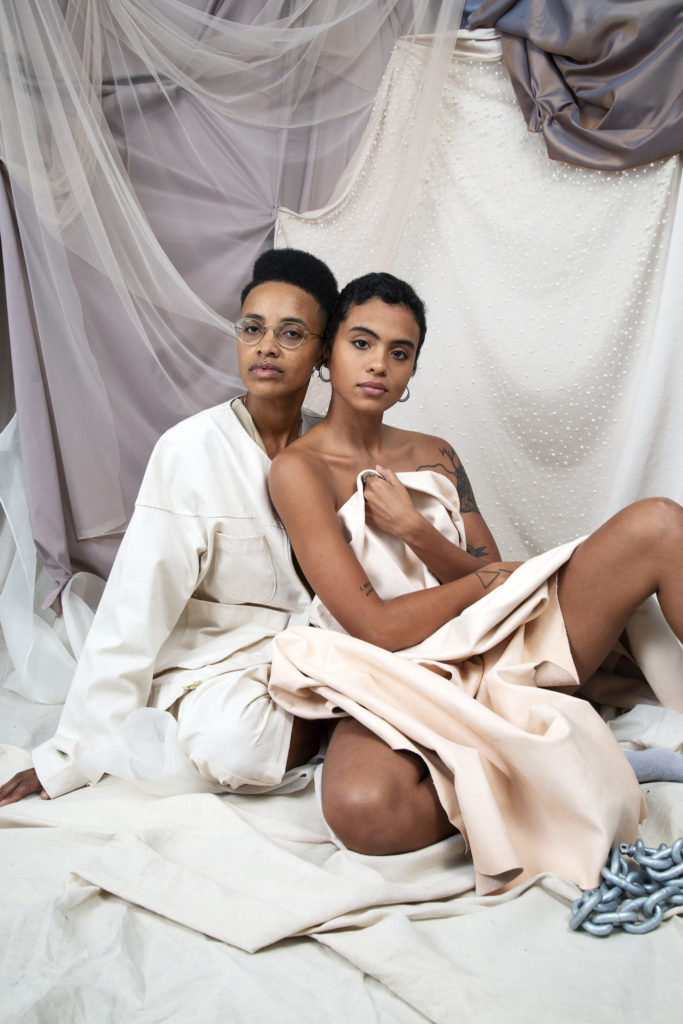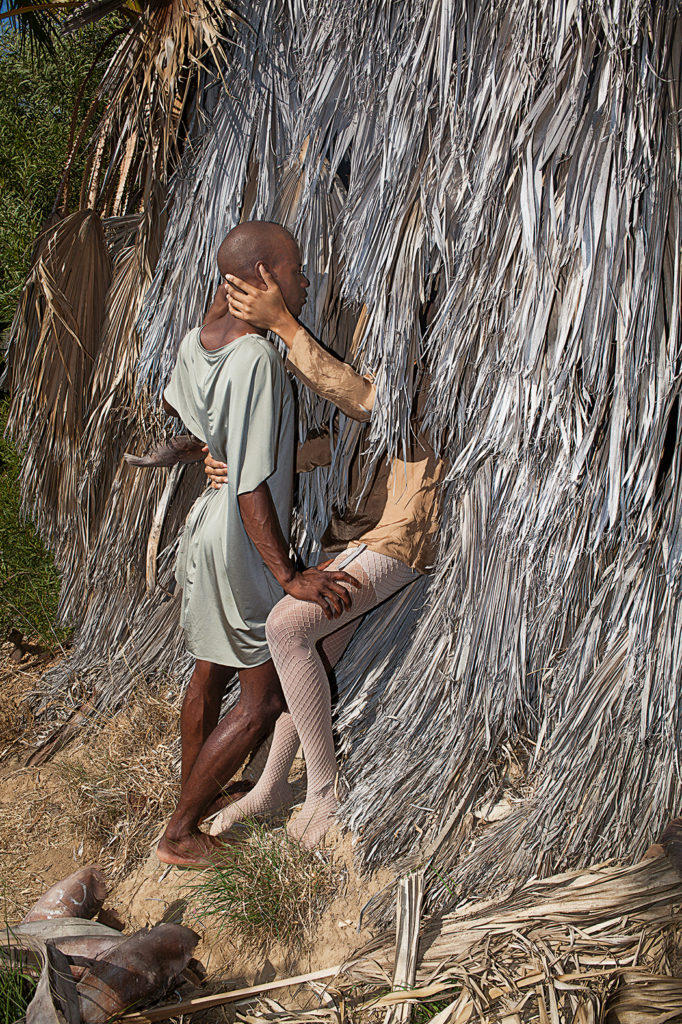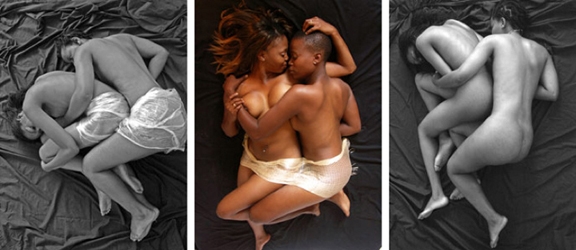CAUTION: This post on queer Black artists features art depicting nudity and sexually explicit acts, as well as photography with partial nudity.
In honor of Black History Month, I want to focus on a trend within a specific group of artists, rather than the art market. It is important to note how Black artists, especially queer Black artists, have created their own spaces and modes of representation in the art world. Their contribution to the development of contemporary art is their push against the mainstream and their ability to create queer utopias in their work. As a queer Black person, I think it’s important to share this with all of you.
A Quick Introduction to José Esteban Muñoz
You can’t talk about queer world building without talking about the late José Esteban Muñoz. Muñoz was an academic whose focus was on queer and critical theory as well as cultural and performance studies. He coined the term “disidentification” and was interested in exploring the potential of queer futurity. Queer futurity involves building queer utopias which exist outside of heteronormative societies. In these utopias, people are free to express queer desire and yearning freely without fear. This form of world building—or rather, creating safe spaces where none previously existed—means moving towards a queer utopia in the future. Through hope, queer folks can imagine a future without the pain of hiding their desires.

Muñoz was also concerned with how we think about time. He argued that the past, present and future occur alongside one another, rather than in a straight line. Time is not linear. Now you may be confused about what that means because we’re taught that we only move forward. Think of it this way: The past is constantly informing the present and the present informs the future we want for ourselves. The past also has an effect on the future because the desire in creating a utopia means rejecting the past in order to make sure that history doesn’t repeat itself. Now this is the Cliffs Notes of Muñoz’s work and theory, but I highly recommend checking out his body of work. He wrote theory in a way that is accessible to everyone. Here, you can find a list of his books and writings.
Queer Black Futurity?
So what’s behind the imagining of queer Black futures? Ultimately, queer Black futurity is tied to the spacial. Black queer folks exist in the liminal space between hetero and queer communities. We reject heteronormativity while also trying to navigate predominately white queer spaces. We also reject the liberal LGBTQ+ desire for inclusion (we’ll get to the issues behind inclusion later) as we focus on how to dismantle the system that oppresses us. It’s so important for queer Black folks to channel hope in our work to move towards a better future. A future that does not involve death, pain, and oppression.

Queer Black Artists You Should Know
In my previous posts I discussed the work of artists who primarily painted. Although queer world building also occurs in painting, it is important to notice its presence in photography. Currently, photographic work by queer Black artists is in the spotlight as they are folded into the world of fine art photography. Here are some contemporary queer Black artists I think you should know.
Naima Green

Two people, presumably involved with one another, sit atop a white cloth spread out on the floor. Behind them, different swaths of fabric are hung and sewn together. The background consists of tulles and luxurious-looking fabrics in shades of white and gray. One person, in a state of undress, reclines holding a heavy cream cloth to their chest. Their legs are open, but they are still covered up. Behind them, their partner sits in white relaxed clothing. In the foreground lies a heavy silver chain which sticks out among the dreamy fabrics. Both subjects gaze directly at the viewer. They are content and powerful in this tender moment.
Naima Green’s photograph Sara Elise & Amber (2018) is a prime example of Black queer world building. It comes from the series Pur·suit, which Green designed as a deck of cards depicting queerness in all of its forms. In this photograph, we are presented with a scene that is almost heavenly, with a color scheme of whites and grays. The foremost subject, covered in the heavy cloth, avoids immediate sexualization. The heavy chain in the foreground suggests that the subjects have freed themselves from something. They are free from the fear of being openly queer, the confines of heteronormative society, and the expectations of what being queer looks like.
Green creates a dreamworld where queer desire is not portrayed as overly sexualized, yet sexuality is still acknowledged. Here, queer desire is not deviant, but something heavenly and euphoric.
D’Angelo Lovell Williams

D’Angelo Lovell Williams’s Elysian (2018) depicts a dress-clad subject being pulled into a wall of palms by another figure whose face is obscured. The second subject is wearing a dress and ripped fishnets. These stockings are held up by garters. Both subjects are shoeless, feet planted on the soft pale brown dirt. There is an intimate placing of hands—hand grabbing thigh, another clasping waist and face. Both are seemingly in a state of undress.
The photograph depicts a moment of intimacy, desire, and yearning. The main subject is being pulled in towards the body of another. So how is this an example of queer world building? It’s important to consider what we know about the surroundings. Here, the answer is nothing. The main figure could be pulled into another world, another time, another reality. This suggests that what is on the other side is an imagining of the artist’s queer utopia. The thatched wall could indicate what separates the subject from feelings of home and belonging.
Unknown space is a key element in the photograph. We are forced to imagine a world beyond our own reality by not being able to fully conceptualize where these figures reside. That imagination, that possibility, is what Muñoz talks about when he discusses queerness and queer futurity.
Zanele Muholi

Being (2007) by Zanele Muholi is a triptych of queer desire and tenderness. Two photographs are in black and white and the center image is in color. The subjects lie on rumpled sheets. In the image on the left, one is curled up in a fetal position, while the other holds them tightly, nestled up close. In the middle photo, we are able to see the lovers’ faces. Their legs are entangled, their bodies close, their hands intimately placed on one another. In both photos, a tissue paper-like cloth covers the subjects’ hips.
The photo on the right is also in black and white. Again, the subjects are facing away from the camera. Yet, their hips are not covered in the same cloth as the other photos. This time, the positioning of the curled up figure is softer—a little bit of release, but still tension. Are these three different couples caught in moments of tenderness?
Muholi builds a world centered around queer intimacy. Once again, the concept of space comes into play with world building. This expression of queer love takes place in an unknown location. Is this a bed? If so, where is that bed? We are forced to question where this exists.
This triptych is similarly indicative of the liminal space queer Black folks occupy. That space between. Here, we see not only another example of what queerness can look like, but also another example of what Black love can look like. There is tenderness, there is desire, there is pleasure, there is no shame.
The Trappings of Inclusion
It’s important when we talk about queer Black artists to acknowledge the trappings of inclusion. “But Rae,” you ask, “Isn’t that what you’re about?” Well, of course, but it’s complicated. In the art world, the commodification of marginalized artists is an issue. What that means is that galleries and institutions, under the guise of inclusion, feature artists of color in shows and exhibitions. These art institutions see that featuring artists of color means more sales, especially in the current political climate, thus the marginalized artist becomes a tool of profit.
Another downfall to inclusion is that once a marginalized group is included in the system, there are still those existing on the outside. That is not to say that it’s not worth diversifying spaces, companies, etc., but rather that the focus must be on the system that causes these disadvantages. For example, if there is a predominately white workspace, one would focus on changing hiring practices, rather than handpicking certain individuals based on their ethnicity.

The most important thing is to realize that representation matters, but only if the group being represented has agency. The story cannot be written for the artist—the artist must be in control of their story. Marginalized artists cannot be told to shut up and be grateful for the opportunity, but must be in control of the display and use of their work. Representation doesn’t make a difference if marginalized artists have no control over how they want their subjects, their work, and themselves to be seen.
What is the Importance of Recognition?
There are people who have been pushing for recognition of marginalized artists, and it’s finally manifesting in the acknowledgement of what I consider to be a queer Black artistic tradition. In this social and political climate, it seems that finally the wishes of those agents of change have come to fruition.
Right now, the idea of world building is appealing. It gives us a sense of control in a time of chaos and allows us to channel our hope into a better future. Additionally, isolation caused by the global pandemic has left us starved for touch. Images of intimacy, desire, and pleasure are particularly meaningful when some of us have been deprived of it for such a long time. Isolation has also left us unable to be as immersed in community as we previously were. Feeling a sense of community is complicated when we have limited human interaction and can no longer hold events that foster those desires for a space where people can revel in their queerness and celebrate that with others.
Now, queer Black futurity relies on digital events and communication, which is far removed from the feeling of being surrounded by people who hold space for you and the energy of pleasure. This artwork can hopefully remind us of better times and influence the good times to come.


